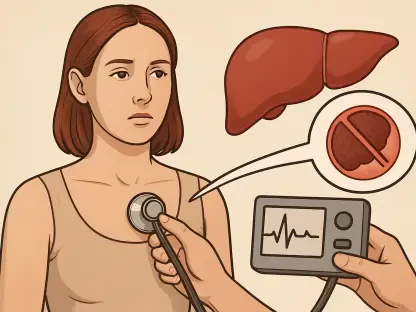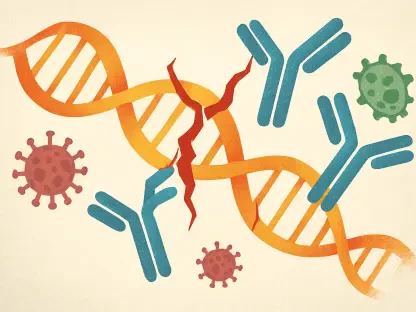The burgeoning demands of the healthcare industry have put the spotlight on sterile packaging, a pivotal element in ensuring the safety and efficacy of medical products and devices. As healthcare facilities worldwide grapple with escalating cases of chronic diseases, the need for impeccable sterility in packaging has assumed increased significance, underscoring the importance of sterile conditions to guarantee product hygiene and reliability. In response, the sterile packaging market is experiencing a swift expansion fueled by rigorous regulatory standards and technological advancements that promise cleaner and more sustainable solutions. The adoption of innovative materials and sustainable practices is reshaping the landscape, with a projected Compound Annual Growth Rate (CAGR) of approximately 5.14% forecasted over the period from 2025 to 2032. As regulatory scrutiny heightens and infection control becomes even more prominent, advancements in sterile packaging materials and technology become essential to meet these evolving demands.
Rising Demand in Healthcare Sector
Sterile packaging is rapidly becoming an indispensable component of the healthcare sector due to the increasing prevalence of chronic diseases. This surge in health concerns has stimulated the need for packaging solutions that uphold sterility to ensure that pharmaceutical products, medical devices, and surgical instruments are preserved until use. The swell in healthcare demands, combined with the necessity to comply with stringent regulations like FDA guidelines and CE marking in Europe, is catalyzing the growth of the sterile packaging market. Materials such as aseptic bags, prefilled syringes, vials, ampoules, and medical device packaging play a crucial role in maintaining the sterility of contents and are vital in safeguarding patient safety. These products must meet rigorous standards to ward off contamination that could have dire health implications.
Technological advancements are also a central driver of the demand for sterile packaging. Innovations in materials and barrier technologies are revolutionizing the market, presenting enhanced options that address not only efficacy but also environmental sustainability. The industry is leaning toward eco-friendly alternatives that reduce environmental impact while complying with regulatory mandates. Consequently, there is growing traction for sustainable packaging solutions—a critical element in aligning with global sustainability goals and addressing the heightened environmental concerns associated with conventional materials.
Key Players and Market Challenges
Leading companies in the sterile packaging market are making significant headway by innovating and adapting to meet the evolving needs of healthcare facilities. Prominent industry players such as Gerresheimer AG, ConvaTec, Amcor, Cardinal Health, and West Pharmaceutical Services are spearheading efforts to develop advanced solutions that satisfy both market demands and regulatory standards. By leveraging pioneering technology, these firms are pushing the boundaries to offer product solutions that are not only compliant with strict safety regulations but also sustainable and efficient. This has placed them at the forefront of the industry’s transformation, guiding the sector toward innovation that brings ecological and economic validity to sterile packaging practices.
Despite the positive momentum, the market faces several challenges that could potentially hinder growth if left unaddressed. High production costs associated with developing sterile packaging with advanced materials and technologies are a notable barrier, affecting price competitiveness and accessibility. Moreover, the reliance on plastics—despite their effectiveness in maintaining sterility—raises environmental concerns. While essential in preventing contamination, plastic waste production and its subsequent disposal further complicate growth amid tightened regulations surrounding plastic use and disposal practices. This dilemma necessitates the exploration of sustainable alternatives and waste reduction strategies to resolve sustainability concerns.
Opportunities and Addressing Challenges
As the sterile packaging market evolves, numerous opportunities emerge, offering promising avenues for growth and innovation. Expanding healthcare infrastructures in emerging markets present fertile grounds for growth, with potential for remarkable expansion due to increased healthcare access and investments. Additionally, the persistent demand for sustainable packaging solutions is propelling advancements and innovation, driving the industry toward eco-friendly practices. This opens avenues for companies to develop biodegradable materials and environmentally responsible packaging methods, further contributing to the industry’s sustainability goals.
However, navigating diverse regulatory environments globally remains a challenge, with varying compliance standards delaying product releases and complicating market entry. Supply chain vulnerabilities, including raw material shortages and logistical bottlenecks, likewise present obstacles that can undermine the timely delivery and cost-effectiveness of sterile packaging solutions. Addressing these challenges requires robust risk management strategies and adaptable approaches to ensure continuity and resilience in the supply chain. Anticipating regulatory changes and securing reliable sources of raw materials are necessary measures to navigate potential disruptions successfully.
Conclusion
The healthcare sector’s growing demands have placed sterile packaging center stage, which is crucial for safeguarding medical products and devices. With facilities worldwide facing a surge in chronic disease cases, the demand for perfect packaging sterility has become paramount, ensuring product hygiene and dependability. Consequently, the sterile packaging market is rapidly expanding, driven by strict regulatory requirements and innovations promising cleaner and more eco-friendly solutions. New materials and sustainable methods are emerging, transforming the industry landscape, with an anticipated Compound Annual Growth Rate (CAGR) of about 5.14% from 2025 to 2032. As regulatory oversight intensifies, the importance of infection control is magnified, making advancements in sterile packaging technology critical. With these evolving challenges, more efficient packaging methods in sync with regulations become essential in healthcare. This focus aligns with the broader goal of enhancing patient safety and care through improved medical product reliability and hygiene.









